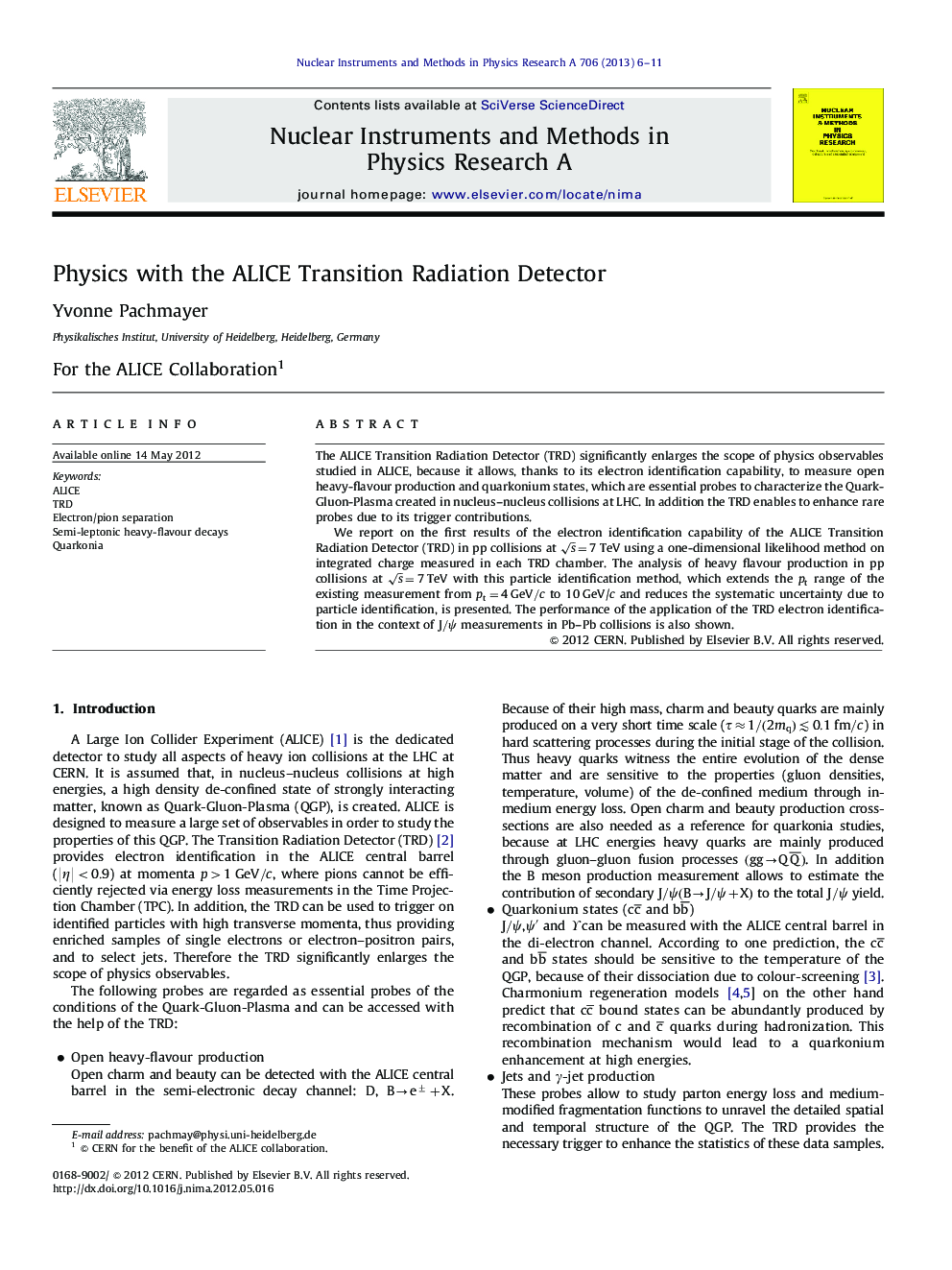| Article ID | Journal | Published Year | Pages | File Type |
|---|---|---|---|---|
| 1823249 | Nuclear Instruments and Methods in Physics Research Section A: Accelerators, Spectrometers, Detectors and Associated Equipment | 2013 | 6 Pages |
The ALICE Transition Radiation Detector (TRD) significantly enlarges the scope of physics observables studied in ALICE, because it allows, thanks to its electron identification capability, to measure open heavy-flavour production and quarkonium states, which are essential probes to characterize the Quark-Gluon-Plasma created in nucleus–nucleus collisions at LHC. In addition the TRD enables to enhance rare probes due to its trigger contributions.We report on the first results of the electron identification capability of the ALICE Transition Radiation Detector (TRD) in pp collisions at s=7TeV using a one-dimensional likelihood method on integrated charge measured in each TRD chamber. The analysis of heavy flavour production in pp collisions at s=7TeV with this particle identification method, which extends the ptpt range of the existing measurement from pt=4GeV/c to 10 GeV/c and reduces the systematic uncertainty due to particle identification, is presented. The performance of the application of the TRD electron identification in the context of J/ψJ/ψ measurements in Pb–Pb collisions is also shown.
